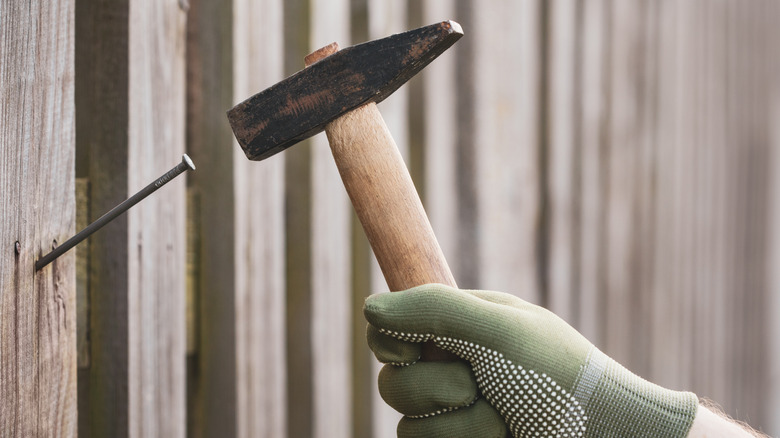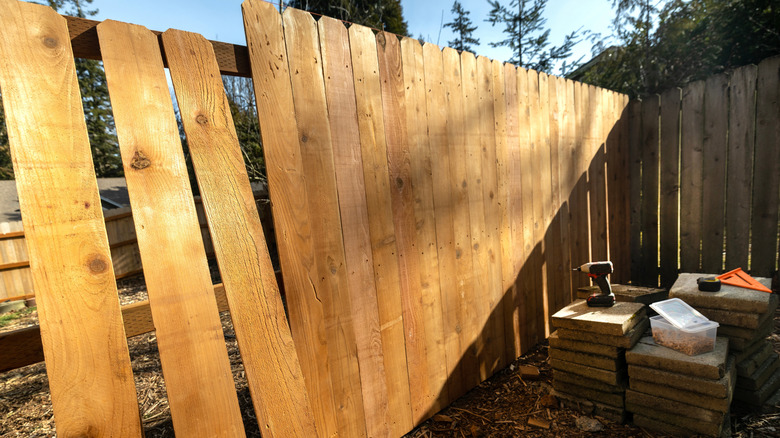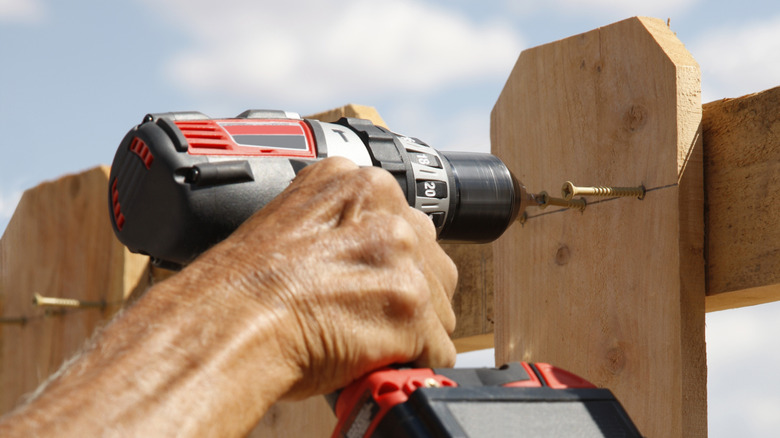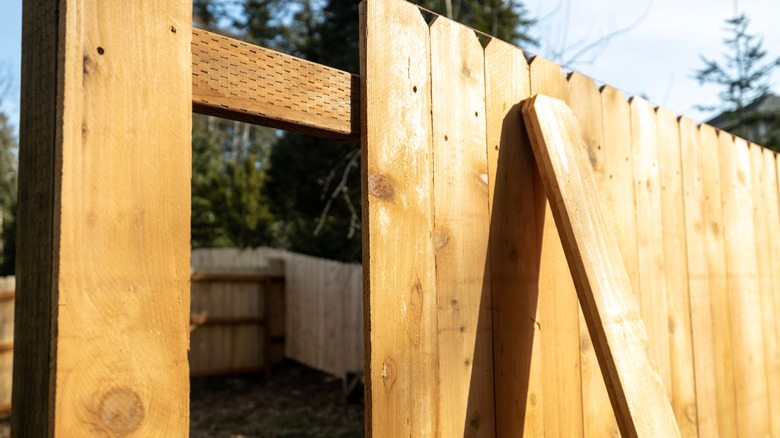What Type Of Nails Do You Use When Building A Fence?
A fence is only as strong as the nails that hold it together, and all nails are not alike. Each type of nail has a specific characteristics, and it is clearly evident when the wrong type of nail has been used to build a fence. Wood expands and contracts as it gets wet and then dries out. Expanding and contracting wood is the main cause of nails working their way out of the pickets, and pickets falling off of the rails. Rails, posts and pickets or infill boards are the common factors in wood fences regardless of the design, and all require the use of nails that are capable of holding them together.
Fence rails
Nails used to fasten fence rails are just as important as those that are used to fasten pickets. The wrong size nail can cause splitting and panels to come loose from the posts. The most appropriate nail for fence rails are 16-d (3 1/2-inch) nails. A ring-shank nail has concentric ridges (rings) all the way down the nail's shank, allowing the embedded nail to grip the wood so firmly that it is tough to pull out.
The proper nail material is determined by the type of wood you're using. Aluminum and stainless steel are appropriate for cedar and redwood fencing. For pressure-treated wood, use hot-dipped galvanized or stainless steel nails.
Pine fences
Fences built out of untreated pine are the least corrosive to fasteners, but that doesn't mean that any type of nail can be used to fasten the rails or pickets. A fence built out of pine is notorious for warping and curling pickets. To help minimize warping and curling pickets, use 6-d (2-inch) ring shank nails made out of galvanized steel for one-by-four or one-by-six fence pickets. The galvanized steel is less expensive than aluminum, but it has the potential to eventually corrode and is not recommended for cedar fences. Galvanized steel nails are used to help lower the overall cost of the fence.
Treated pine fences
Pressure-treated lumber is infused with chemical preservatives to provide resistance to rot and insect damage. It's the best economical choice for wood fencing. Choosing the right nail for this type of lumber is important because the chemicals are corrosive to some metals, namely plain steel and aluminum. The standard option is hot-dipped galvanized nails, which provide more corrosion-resistance than electro-galvanized or hot-galvanized materials. The most reliable material for pressure-treated wood is stainless steel. Use 6-d (2-inch) rink shank nails to fasten pickets and infill boards.
Cedar and redwood fences
Fences built out of cedar or redwood tend to look better than treated-lumber fences, but they are more expensive. These beautiful woods contain natural acids that can be corrosive to ordinary nails. It also reacts with galvanized nails and produces the familiar dark streaks, or bleeding, you see on many fences. The best option for cedar and redwood is stainless steel, which does not bleed and is the most corrosion-resistant nail material. Aluminum is also acceptable in many climates, but for coastal areas and very wet conditions, stainless steel offers added protection that's worth the extra cost. Use 6-d (2-inch) nails to fasten the pickets, and 16-d nails to fasten the rails. Again, ring-shank nails offer the best holding power.




